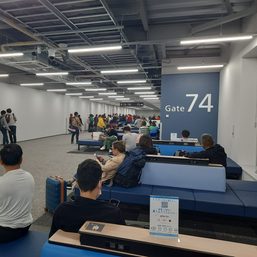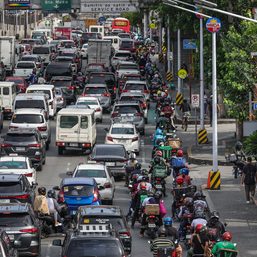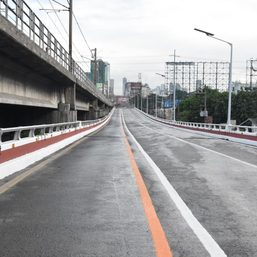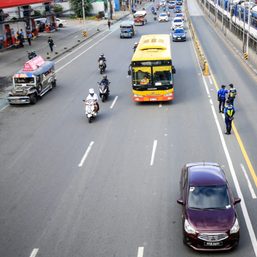SUMMARY
This is AI generated summarization, which may have errors. For context, always refer to the full article.
![[OPINION] Are holiday travel woes here to stay? Not if we plan using complexity science](https://www.rappler.com/tachyon/2023/12/holiday-travel-woes-december-23-2023.jpg)
Normally, I navigate Metro Manila by staying within walking distance between amenities to avoid the seasonal traffic congestion. However, recent travel necessities – an international flight and a domestic one – compelled me to venture beyond these limits.
As the holiday season brings with it the familiar surge of traffic, my recent travel experiences became even more poignant. The traffic congestion and vibrant hustle and bustle, particularly in our metropolises, make the “ber” period in the Philippines a crucial time to consider the efficacy of our public systems.
Ripple effects of international travel delays
In preparation for my international trip, I left Makati at 2:30 pm for a 9 pm flight, only to find myself caught in the thick of holiday traffic. What was usually a 20-minute drive to the Ninoy Aquino International Airport (NAIA) became an exhausting multi-hour ordeal.
The congestion on the roads was just the beginning of a cascade of delays. Upon arrival at the airport, I was greeted with unexpectedly long queues for a simple bag drop-off at the check-in, and the “priority lanes” at immigration proved to be a misnomer, offering little relief from the lengthy wait. Talk about a domino effect. (Un)surprisingly, we arrived at our boarding gate with less than an hour to spare before departure, only to face an unforeseen twist: we were deplaned – but that’s a story for another time.
Systemic inefficiencies in domestic travel
My domestic travel experience mirrored the same challenges and complexities. Anticipating potential delays, I left Makati well ahead of time for a flight scheduled to board at 3 pm. However, despite my proactive measures, I was soon entangled in a web of inefficiency that seemed all too familiar.
At the airport, I headed straight for the check-in counter, expecting a quick bag drop-off. I was met with another lengthy delay due to systemic inefficiencies.
The line at the check-in counter was not just due to the usual rush, but was exacerbated by cascading delays from international flights. These delays had spilled over into our domestic system, creating a significant bottleneck even for those of us simply dropping off bags.
It took at least an hour to navigate through this congested process – another stark reminder of how interconnected and vulnerable our systems are to disruptions, even those originating from different segments.
Comprehensive approaches in public service
Ironically, my recent journeys served as a clear demonstration of what I have been advocating for all along – the need for a Complexity Science perspective in strategic planning.
When considering Complex Systems, it’s essential to recognize that the whole is not only more than the sum of its parts but also fundamentally different. This is particularly applicable in systems like city transportation or airport operations, where the interactions between individual components can lead to emergent behaviors that are unexpected and often exceed what each part can achieve independently.
Understanding this perspective is critical in realizing that simple cause-and-effect solutions rarely work effectively in such complex systems. Instead, a multi-faceted approach that considers the myriad variables and their interactions is needed.
This becomes especially critical in public service, where systemic improvements are essential. Merely enhancing individual components of our public infrastructure, such as check-in lines at airports, toll roads, or airport runways alone, is insufficient for addressing the broader issues. Integrated solutions that take into account the complex interplay between various public services are necessary.
For instance, consider the queuing problem at airports – a classic example of a complex system challenge. Mechanism-based modeling helps us understand the fundamental aspects of queuing dynamics, such as the rate of passenger arrival, service times at check-in counters, and the impact of these factors on queue lengths and waiting times.
But while this understanding is crucial for designing efficient queuing systems and managing passenger flow effectively within the airport, it forms just one part of the broader system. Addressing airport efficiency comprehensively requires extending our focus beyond internal dynamics to include external systems, such as the traffic congestion on adjacent roads.
For instance, AI-based predictive models can analyze historical data of passenger traffic, both inside and outside the airport, to forecast peak times, variations in queue lengths, and potential bottlenecks. This broader perspective enables airport management to make more informed, data-driven decisions. For example, anticipating heavy road traffic and its impact on passenger arrival times could lead to adjusting check-in processes or coordinating with city traffic management to mitigate delays.
This integrated approach illustrates the need for a whole-of-systems perspective in managing complex environments. Solving the internal challenges of the airport, while crucial, is not sufficient. A comprehensive strategy must also consider external factors, ensuring a seamless and efficient experience from the journey’s start to its end.
Integrating complexity science for future solutions
The lessons learned from my travel experiences underscore the necessity of embracing a Complexity Science approach in strategic planning and public service. This approach, which includes the utilization of tools in network science, artificial intelligence, and agent-based modeling, among others, is crucial for developing strategies that are not just reactive but also proactive and comprehensive.
By understanding the interplay of various factors in complex systems, such as the cascading effects of delays in air travel or the intricacies of urban traffic during the holiday season, we can move beyond merely alleviating symptoms to addressing the root causes of these issues. Complexity Science empowers us to anticipate potential challenges and craft policies that are adaptable and resilient, improving the quality of life for individuals, particularly during high-stress periods like the holidays.
This perspective is not just about tackling current problems; it’s about preparing for future challenges and ensuring sustainable solutions. It involves looking beyond the immediate, understanding the deeper, interconnected nature of the challenges we face, and appreciating the broader impact of our decisions. – Rappler.com
Erika Fille T. Legara is a scientist and educator interested in the study of complex systems and artificial intelligence. She is an associate professor and holds an Aboitiz Chair in Data Science at the Asian Institute of Management.
Add a comment
How does this make you feel?


![[OPINION] Clark International Airport, one of world’s most beautiful airports, is badly underutilized](https://www.rappler.com/tachyon/2024/05/clark-airport-underutilized-may-28-2024.jpg?resize=257%2C257&crop=560px%2C0px%2C720px%2C720px)


![[In This Economy] Why we need to stop the proposed Laguna de Bay expressway](https://www.rappler.com/tachyon/2024/06/Why-we-need-to-stop-Laguna-de-bay-expressway-June-28-2024.jpg?resize=257%2C257&crop=458px%2C0px%2C720px%2C720px)


![[EDITORIAL] Kamaynilaan para sa tao, hindi para sa mga sasakyan](https://www.rappler.com/tachyon/2024/04/animated-traffic-april-2024-carousel.jpg?resize=257%2C257&crop=410px%2C0px%2C720px%2C720px)

There are no comments yet. Add your comment to start the conversation.